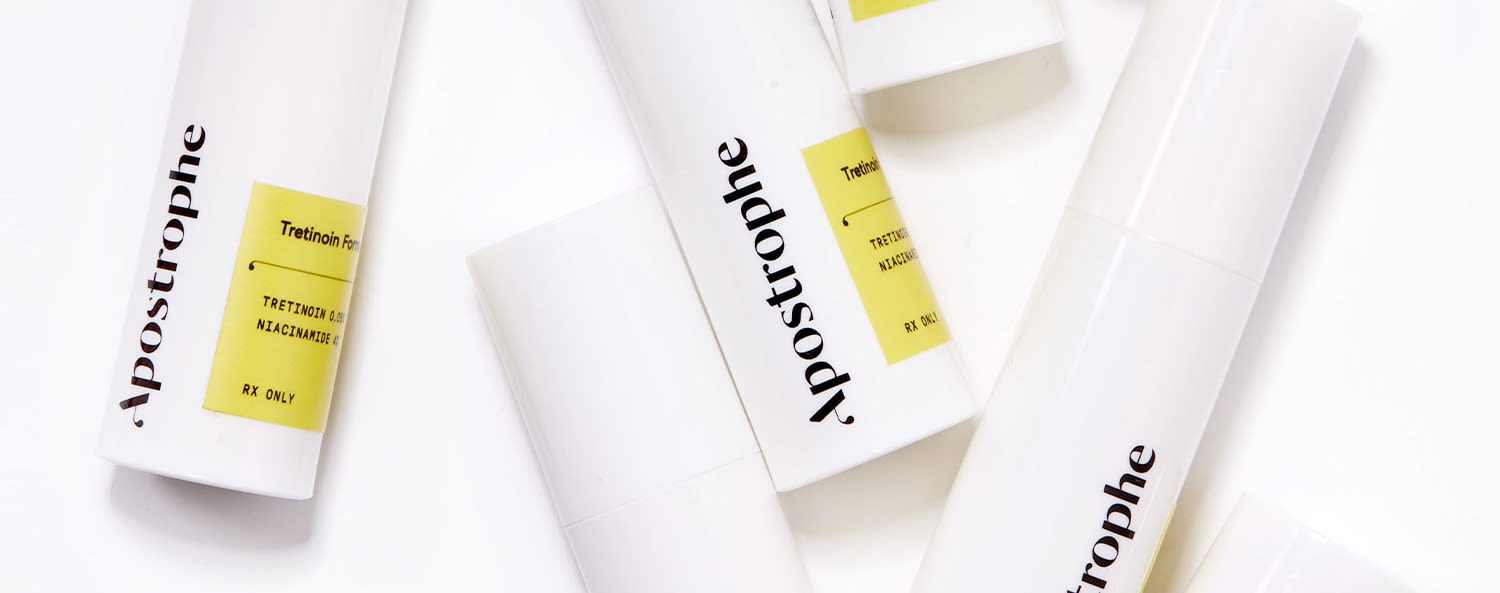

Finance
How Much Is Tretinoin With Insurance?
Published: November 9, 2023
Find out how much Tretinoin can cost with insurance coverage. Explore finance options to help make this prescription medication more affordable.
(Many of the links in this article redirect to a specific reviewed product. Your purchase of these products through affiliate links helps to generate commission for LiveWell, at no extra cost. Learn more)
Table of Contents
Introduction
Welcome to the world of tretinoin and insurance coverage! If you’re wondering how much tretinoin will cost you with insurance, you’ve come to the right place. Tretinoin is a popular prescription medication used to treat acne and improve the appearance of wrinkles and skin discoloration. It belongs to a group of medications known as retinoids, which are derived from vitamin A.
Insurance coverage plays a crucial role in determining the affordability of tretinoin. It can significantly reduce the out-of-pocket expenses for those who have insurance plans that cover prescription medications. However, the cost of tretinoin can still vary depending on several factors, including your insurance provider, the specific plan you have, and the pharmacy you choose to fill your prescription.
In this article, we will explore the factors that affect the cost of tretinoin with insurance and provide tips on maximizing your insurance coverage to get the best deal possible. Whether you’re new to tretinoin or looking for ways to save money on your prescription, we’ve got you covered.
Understanding Tretinoin
Tretinoin, also known as all-trans retinoic acid, is a medication primarily used to treat acne. It is a derivative of vitamin A and works by increasing the turnover of skin cells, preventing the accumulation of dead skin cells, and unclogging pores. This leads to reduced acne breakouts and improved skin texture.
In addition to its acne-fighting properties, tretinoin is also commonly prescribed for its anti-aging benefits. It helps to stimulate collagen production, which can improve the appearance of fine lines, wrinkles, and skin discoloration. Tretinoin is available in different formulations, including creams, gels, and lotions, allowing for a variety of application options tailored to individual needs.
It is important to note that tretinoin is a prescription medication and should only be used under the guidance of a healthcare professional. It may cause skin dryness, redness, and peeling, especially during the initial weeks of use. Therefore, it is recommended to start with a lower strength and gradually increase as tolerated. Your healthcare provider will determine the appropriate strength and frequency of application based on your specific skin condition.
Tretinoin should not be used by individuals who are pregnant or planning to become pregnant, as it may cause harm to the fetus. It is crucial to discuss any existing medical conditions, allergies, or medications you are taking with your healthcare provider before starting tretinoin.
Understanding how tretinoin works and its potential benefits is important when considering its cost with insurance coverage. Knowing the value and effectiveness of this medication can help individuals make informed decisions about their skincare and treatment options.
Importance of Insurance Coverage
Insurance coverage plays a vital role in making healthcare more accessible and affordable for individuals. When it comes to tretinoin, insurance coverage is equally important for several reasons.
Firstly, tretinoin is often prescribed as a long-term treatment for acne and anti-aging purposes. Insurance coverage can significantly reduce the cost of monthly medication refills, making it more affordable for individuals to continue their treatment without a financial burden. This ensures consistent and uninterrupted access to medication, optimizing the chances of achieving desired results.
Secondly, tretinoin is frequently included as a covered prescription medication under various insurance plans. Having insurance coverage can provide individuals with a sense of security, knowing that a portion or all of the medication cost will be covered. This alleviates the stress of financial constraints and allows individuals to focus on their skincare journey.
Moreover, insurance coverage for tretinoin extends beyond the cost of the medication itself. Many insurance plans also cover dermatology visits, where individuals can receive expert advice, evaluation, and monitoring of their skin condition. This comprehensive coverage ensures that individuals have access to the essential medical guidance needed for their tretinoin treatment.
Lastly, insurance coverage for tretinoin can also result in significant cost savings. Without insurance, the out-of-pocket expenses for tretinoin can be quite high, especially for higher strengths and larger quantities. With insurance coverage, individuals can take advantage of negotiated discounted prices and lower copayments, ultimately reducing their overall medication costs.
Overall, the importance of insurance coverage for tretinoin cannot be overstated. It provides financial relief, consistent access to medication, and access to critical dermatological care. If you have insurance coverage, it is essential to understand the benefits and limitations of your plan to make the most of your tretinoin treatment.
Factors Affecting Tretinoin Cost with Insurance
Several factors can influence the cost of tretinoin with insurance coverage. Understanding these factors can help individuals make informed decisions and navigate the complexities of insurance coverage for this medication.
1. Insurance Provider and Plan: The specific insurance provider and plan you have can significantly impact the cost of tretinoin. Different insurance providers may have varying negotiated rates with pharmacies, resulting in different prices for the medication. Additionally, certain insurance plans may offer more comprehensive coverage for prescription medications, including tretinoin, while others may have limitations or exclusions.
2. Formulary Placement: Insurance providers often have a formulary, which is a list of covered medications. Tretinoin may be placed in different tiers within the formulary, with lower-tier medications usually having lower copayments. Checking the formulary for your insurance plan can give you an idea of how much you can expect to pay for tretinoin.
3. Generic vs. Brand Name: Tretinoin is available in both generic and brand-name formulations. Generic versions typically cost less than brand-name medications. Your insurance plan may have different cost-sharing requirements for generic and brand-name medications, affecting the out-of-pocket costs for tretinoin.
4. Pharmacy Network: Your insurance plan may have a network of preferred pharmacies. Using an in-network pharmacy can lead to lower copayments or cost-sharing compared to out-of-network pharmacies. It is important to check if your preferred pharmacy is in-network to minimize your medication cost.
5. Deductibles and Copayments: Insurance plans often have deductibles and copayments that need to be met before the insurance coverage kicks in. The amount of your deductible and copayment will impact the initial out-of-pocket cost for tretinoin. Once these are met, your insurance coverage will start contributing to the cost of the medication.
6. Manufacturer Discounts and Coupons: Some pharmaceutical manufacturers offer discounts or coupons for specific medications, including tretinoin. These discounts can help reduce the cost of medication even further, regardless of insurance coverage. Checking the manufacturer’s website or speaking with your healthcare provider can provide information on available discounts.
It’s important to review your insurance plan’s coverage and understand how these factors affect the cost of tretinoin. By doing so, you can make informed decisions about where to fill your prescription and optimize your insurance coverage to minimize your out-of-pocket expenses.
Average Cost of Tretinoin with Insurance
The average cost of tretinoin with insurance can vary widely depending on a variety of factors, including your insurance provider, plan, and formulary placement. It’s important to note that these costs are approximate and can change based on various considerations and individual circumstances.
For individuals with insurance coverage, the cost of tretinoin is typically determined by copayments or cost-sharing requirements set by their insurance plan. Copayments are fixed amounts that individuals must pay for each prescription, while cost-sharing refers to the percentage of the medication cost that individuals are responsible for.
In general, the average copayment for tretinoin with insurance can range from $10 to $100, depending on the specific insurance plan. However, it’s essential to review your insurance plan’s details to understand your copayment obligations accurately.
Additionally, the formulary placement of tretinoin can affect the cost. Lower-tier medications in the formulary usually have lower copayments, while higher-tier medications may have higher copayments or require prior authorization from your healthcare provider.
It’s also worth noting that the cost may vary depending on whether you opt for generic or brand-name tretinoin. Generic versions, which typically cost less, often have lower copayments compared to brand-name medications.
It’s important to remember that tretinoin costs can change over time due to insurance plan updates and changes in medication pricing. Staying informed about your insurance coverage and regularly reviewing your insurance plan’s details can help you anticipate and manage any potential cost fluctuations.
If the cost of tretinoin with insurance is still prohibitive, there may be alternative options to explore. This can include utilizing manufacturer discounts or coupons, discussing lower-cost alternatives with your healthcare provider, or considering different pharmacies that may offer lower prices for tretinoin.
Remember, the average cost of tretinoin with insurance is just a starting point. It’s essential to review your insurance plan’s coverage, reach out to your insurance provider for specifics, and explore different options to find the most affordable solution for your tretinoin prescription.
Insurance Coverage for Tretinoin
Insurance coverage for tretinoin can vary depending on your specific insurance plan and provider. While many insurance plans do cover tretinoin, it’s important to understand the details of your coverage to determine the extent of your benefits.
When it comes to insurance coverage for tretinoin, several aspects should be considered:
Formulary Inclusion: Tretinoin is often included in the formulary of insurance plans. The formulary is a list of medications that your insurance plan covers, and it can provide insights into copayments or cost-sharing requirements associated with tretinoin. Checking the formulary will inform you of the coverage status and any associated costs.
Prior Authorization: Some insurance plans may require prior authorization for tretinoin. This means that your healthcare provider needs to provide additional information or documentation to your insurance company to demonstrate medical necessity. Understanding if your plan requires prior authorization and working with your healthcare provider to fulfill these requirements is crucial to ensure your coverage is not delayed or denied.
Quantity Limits: Insurance plans may impose quantity limits on tretinoin prescriptions. This means that there may be a maximum amount of medication that can be covered within a specific time period. Understanding these limits can help you plan accordingly and work with your healthcare provider to ensure you have access to the necessary quantity of medication.
Network Pharmacies: Each insurance plan typically has a network of preferred pharmacies. Using an in-network pharmacy can often lead to lower copayments or cost-sharing requirements compared to out-of-network pharmacies. Check with your insurance provider to identify the network pharmacies and make sure your preferred pharmacy is included.
It is important to review your specific insurance plan’s coverage details for tretinoin. This can typically be done by contacting your insurance provider directly, reviewing your plan’s documents, or accessing your insurance account online. By understanding the specifics of your coverage, you can effectively navigate the insurance process and make informed decisions about your tretinoin medication.
If you have any questions or concerns about your insurance coverage for tretinoin, it is recommended to reach out to your insurance provider or consult with a healthcare professional. They can provide guidance, answer your questions, and help ensure you are getting the most out of your insurance coverage for tretinoin.
Tips for Getting the Best Insurance Coverage for Tretinoin
When it comes to getting the best insurance coverage for tretinoin, there are several tips you can follow to navigate the process and maximize your benefits. By being proactive and informed, you can ensure that you are getting the most out of your insurance coverage for this medication:
1. Review Your Insurance Plan: Take the time to review the details of your insurance plan, including the formulary, copayment requirements, and any restrictions or limitations on tretinoin coverage. Understanding your plan’s coverage guidelines will help you make informed decisions about your medication and avoid surprises when it comes to costs.
2. Communicate with Your Healthcare Provider: Keep your healthcare provider informed about your insurance coverage and any changes in your insurance plan. They can work with you to ensure that your prescribed tretinoin aligns with your coverage and provide any necessary documentation or authorization if required by your insurance provider.
3. Explore Different Pharmacies: Check if your insurance plan has a network of preferred pharmacies. Using an in-network pharmacy can often result in lower copayments. However, it’s also worth checking prices at different pharmacies, as prices can vary. Some pharmacies may offer discounted rates or have special programs that can help you save on your tretinoin prescription.
4. Utilize Manufacturer Discounts or Coupons: Many pharmaceutical manufacturers offer discounts or coupons for specific medications, including tretinoin. Check the manufacturer’s website or speak with your healthcare provider to see if there are any available discounts or savings programs that can help reduce your out-of-pocket expenses.
5. Consider Prescription Assistance Programs: If you are experiencing financial difficulties, explore prescription assistance programs that may offer financial support or discounted medications. These programs are often available to individuals who meet certain income criteria or have specific medical conditions.
6. Stay Informed and Advocate for Yourself: Stay updated on any changes to your insurance plan’s coverage for tretinoin. Communicate with your insurance provider, ask questions, and advocate for yourself to ensure that you are making the most of your insurance benefits and receiving the coverage you are entitled to.
Remember, understanding your insurance coverage and being proactive in managing your prescription can help you navigate the process more smoothly and save money on your tretinoin medication. By following these tips, you can optimize your insurance coverage and make your tretinoin treatment more affordable and accessible.
Conclusion
Insurance coverage plays a crucial role in determining the affordability and accessibility of tretinoin, a popular prescription medication for acne and anti-aging purposes. Understanding the factors that affect the cost of tretinoin with insurance and maximizing your insurance coverage can help you get the best deal possible.
Insurance coverage for tretinoin can vary depending on factors such as your insurance provider, plan, formulary placement, and pharmacy network. It’s important to review your insurance plan, communicate with your healthcare provider, and explore different pharmacies to find the most affordable options.
Taking advantage of manufacturer discounts or coupons, considering prescription assistance programs, and staying informed about changes to your insurance coverage are additional strategies to optimize your insurance coverage.
By being proactive and informed, you can navigate the complexities of insurance coverage for tretinoin and make the most of your benefits. Remember that the cost of tretinoin with insurance is not fixed, and by following the tips provided in this article, you can minimize your out-of-pocket expenses and ensure consistent access to this important medication.
Always consult with your healthcare provider and insurance provider for specific information regarding your coverage and options. With the right approach, you can take care of your skin and achieve your desired results while managing the cost of tretinoin effectively with insurance coverage.














